Battery Guide - Best 18650 Batteries
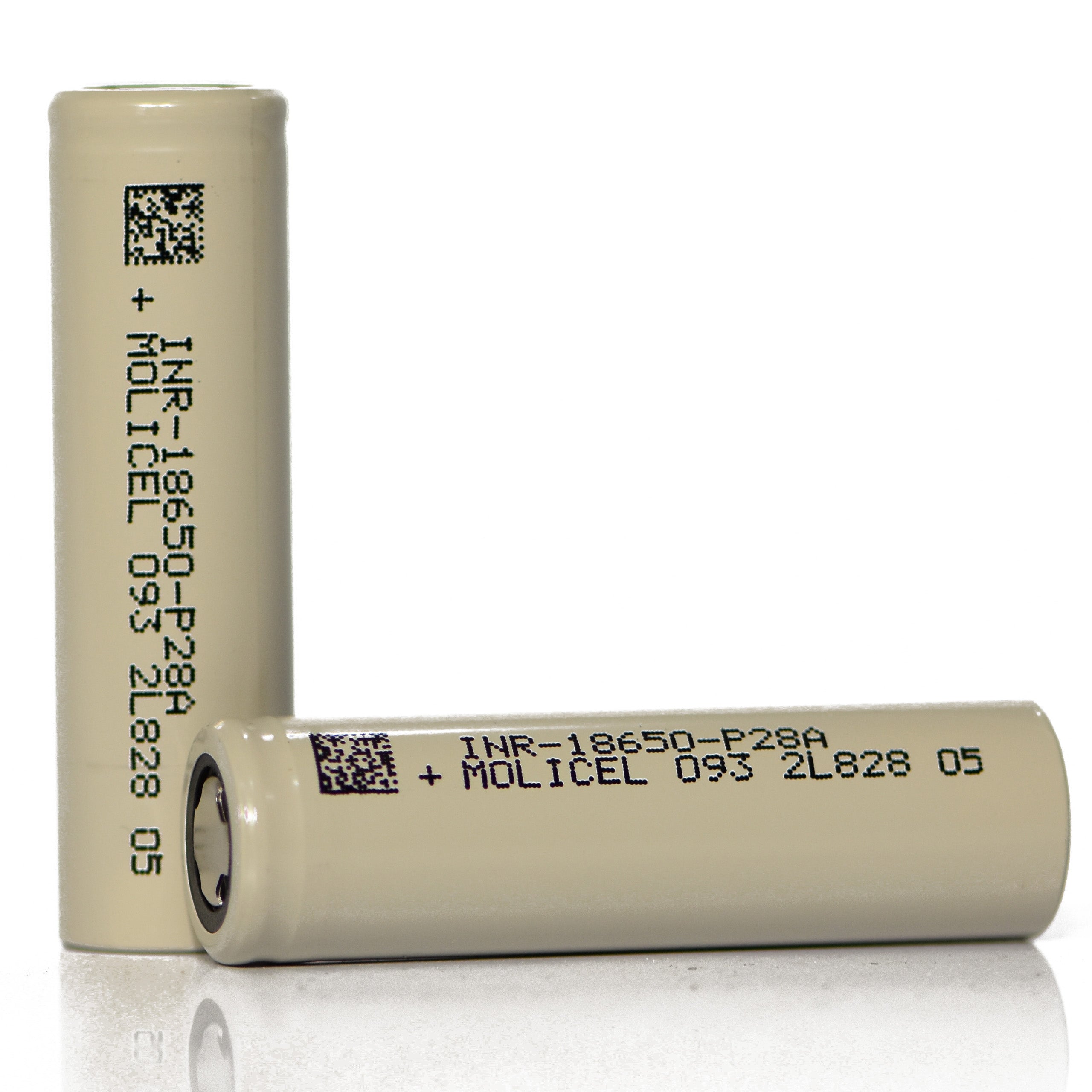
Best All Around 18650 Battery
The Molicel P28A is our best overall 18650 battery for 2022 It offers a capacity of 2800mAh and CDR of 35A. Ideal for all applications but the cell will show its true greatness in high drain devices.
Buy NowBest Vape Battery
The Epoch Batteries 3000P 18650 Battery with a 3000mAh capacity and 15A CDR is rated as the best vape battery in the market today! Great capacity at 3000mAh and still able to handle the high drain demand a vape device requires. Double wrapped for added protection.
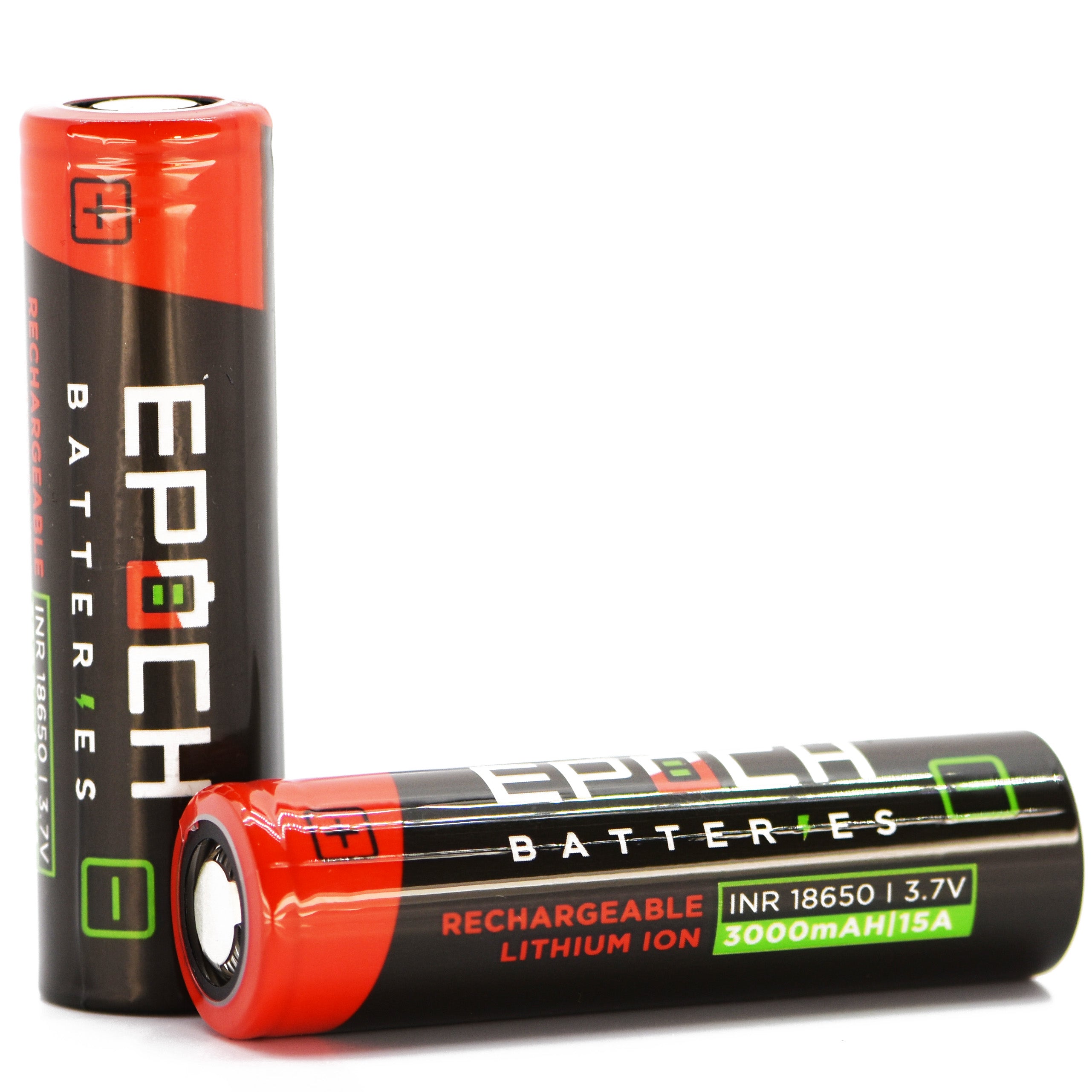
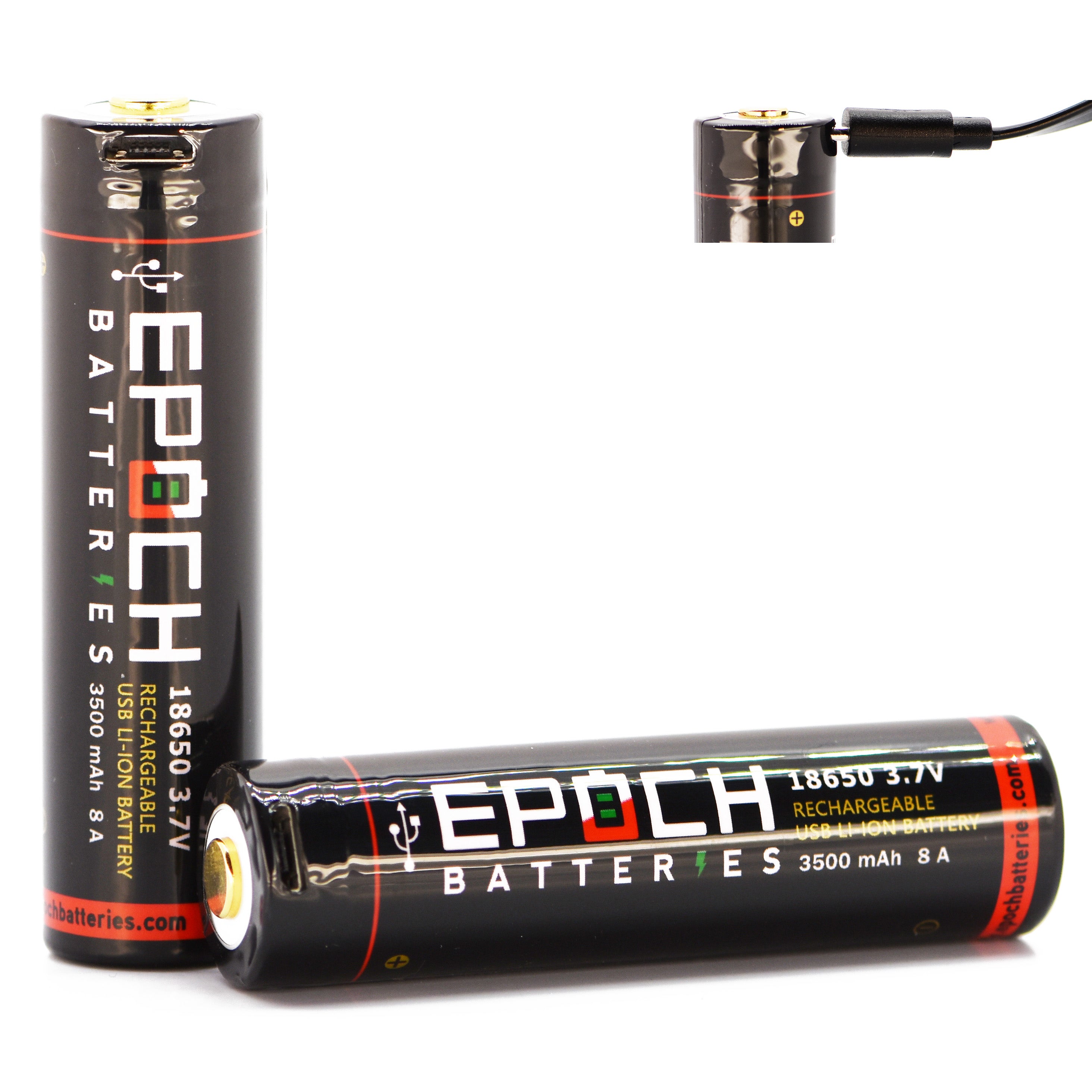
Best Flashlight Battery
The Epoch 18650 3500mAh 8A Protected Button Top battery is the top choice for lithium powered flashlights as well as many other devices. This battery is powering electric vehicles, electric bikes, power tools and so many more applications. It has great reliability with a 3500mAh capacity and 8A CDR. Truly, one of the best batteries on the market!
Safest Battery
While all lithium ion batteries are safe when cared for properly, the Samsung 20S is considered one of the safest options. The CDR of 30A is the highest true rating among all lithium ion 18650 batteries and it has tested to maintain a low running temperature at up to 40A CDR. This high current rating does come with a cost as the Samsung 20S has a capacity of only 2000mAh so you will find yourself charging these batteries more often.
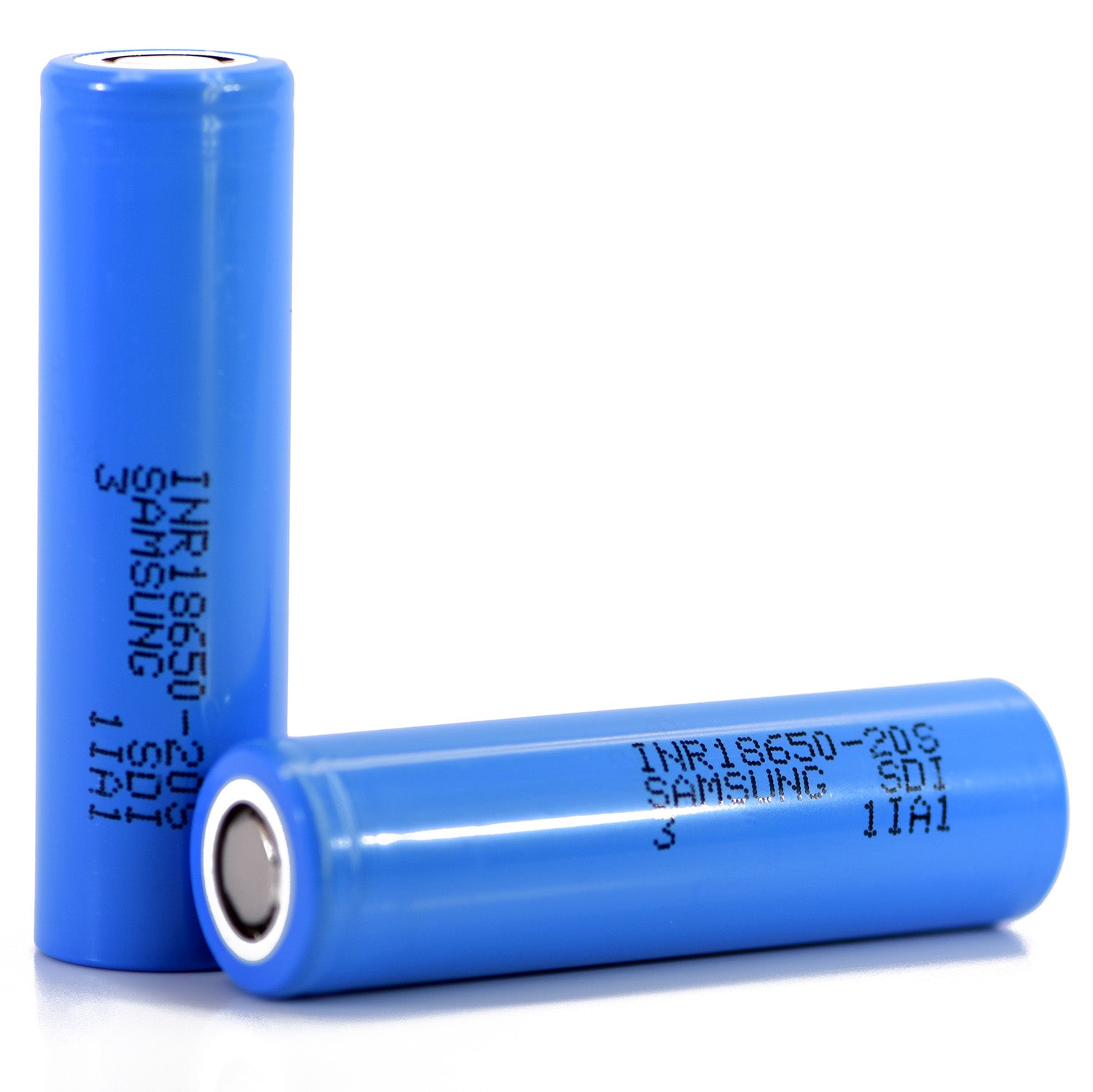
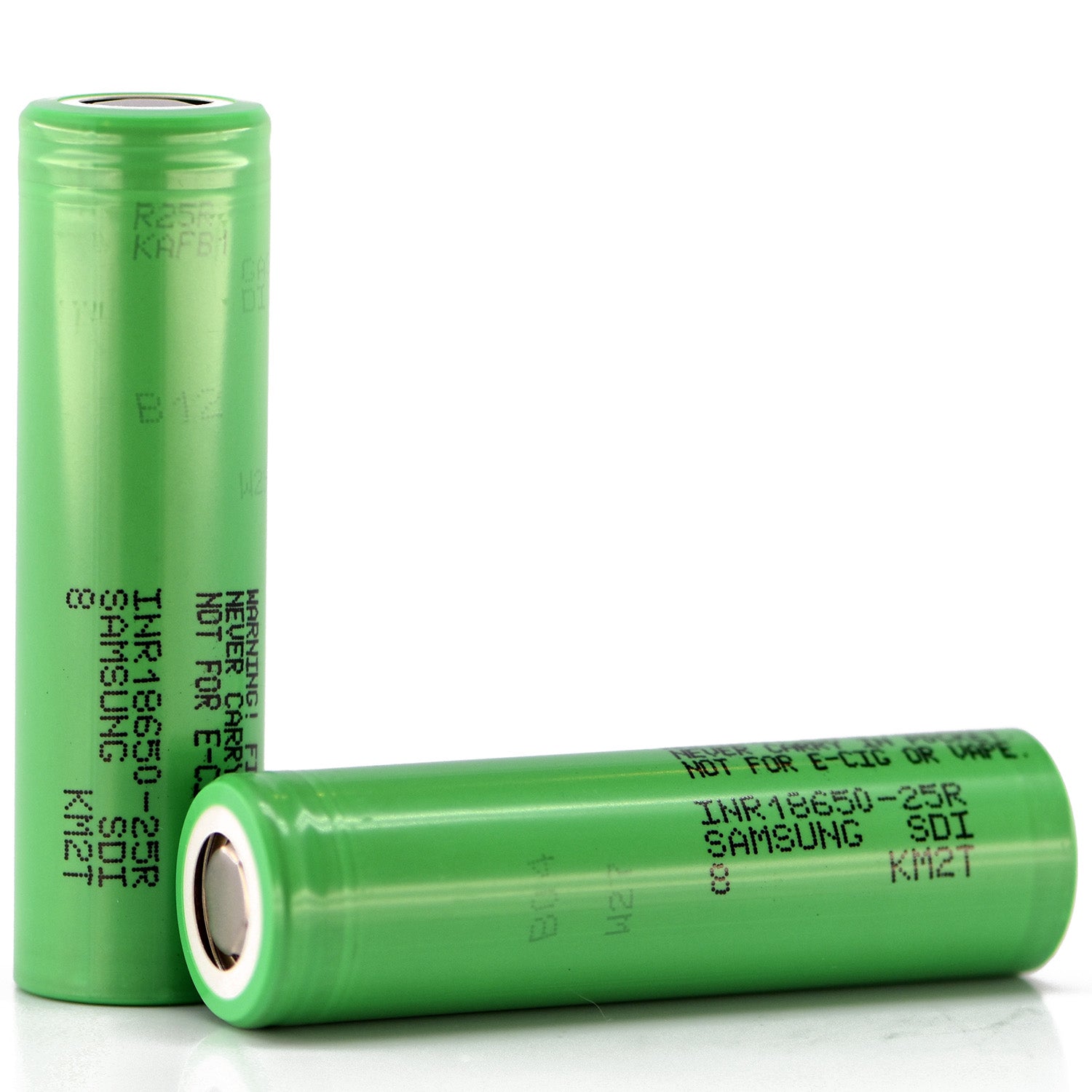
Best Seller
The Samsung 25R remains our top seller for 2021 and it's easy to understand why. This has been the go to battery for many since being released in 2014. With a capacity of 2500mAh and CDR of 20A, this battery provides a great balance of current rating and capacity.
Buy NowBest High Drain 18650 Batteries of 2022 - Top 5
Best Battery Chargers of 2022 - Top 5
Choosing an 18650 Battery
Brand / Manufacturer
The first thing to consider when choosing an 18650 battery for your device or project is the battery brand. Not all brands are created equal and often times you will find are not very truthful in their battery ratings. This is especially true when discussing the Chinese re-wrapping brands. The goal of any manufacturer or brand is to sell as many batteries as possible but some companies have been known to exaggerate their ratings to appear to offer a better product than the other. This practice of exaggerating battery specs is unlawful and can be very dangerous to consumers if gone unchecked. Thankfully, there is a watchdog in the lithium ion battery industry known as the battery mooch who provides thorough testing and will call out these companies for their unlawful practice.
There are five major brands that manufacturer batteries who you can rely on to provide quality, consistent and truthfully rated batteries and those brands are; LG Chem, Molicel, Samsung, Sony|Murata and Panasonic|Sanyo. These brands are well established and have long standing tradition, values and standard to uphold. Any manufacturer specs provided by these brands is well documented and tested many times over. You will often see the battery outperform the manufacturer ratings put forward from these brands.
Other brands such as Efest, Vapcell, Imren and MXJO have been established for a few years and their quality has certainly improved. These brands tend to slightly exaggerate the battery ratings for their products in an effort to appeal to the consumer and sell more. It should be noted these companies do not actually produce their own lithium ion battery but instead purchase them from other manufacturers and then wrap the battery and add packaging to make the battery suitable for retail sale. They do often provide value by using a thicker PVC wrap on the battery which provides an extra layer of protection. As well these brands often include a battery carrying case with all of their batteries.
There are various other unknown brands with all sorts of unrealistic ratings. As of 2021, there is not a single 18650 lithium ion battery rated above 3600mAh capacity or a 30A CDR. If you see any 18650 battery marketed above these specs, you should be very wary of what you are actually getting as it is absolutely certain to be false and exaggerated.
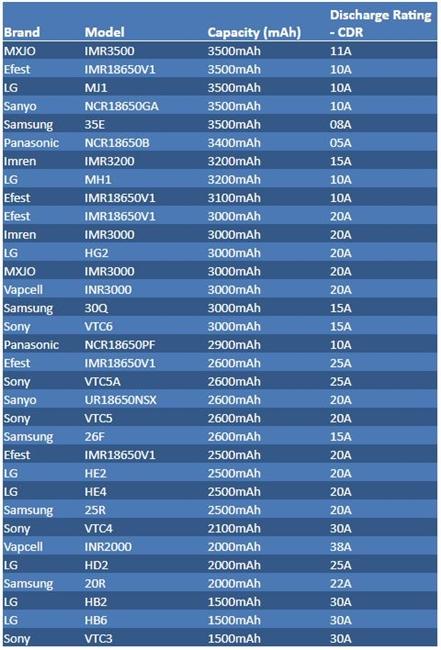
Capacity
Given the choice, everyone would choose a battery with the highest capacity. Capacity is measured in milliampere-hours (mAh) and this tells us how many milliamps we can draw from the battery for how many hours. However, capacity comes at the cost of current rating (CDR). Inside of each cell, they can only fit so much material so you often have to choose between a high capacity battery OR a high current battery. Take for example the LG HB6 which has a CDR of 30A but only a capacity of 1500mAh. On the other end of the spectrum is the Panasonic NCR18650B which has a CDR of only 4.9A and capacity of 3400mAh.
There are some batteries that manage to balance capacity and current rating such as the Samsung 25R, LG HG2, and Samsung 30Q. All three of these batteries provide a great balance of capacity and current.
Continuous Discharge Rating (CDR)
This is probably the most important thing to consider when selecting a battery. You need to know how much current the device you are trying to power requires before choosing your battery. If you choose a battery with a current rating less than what you need, you will notice the battery overheating as it is working beyond its ability to keep up. There are also two terms you should know that are discussed in battery current ratings. Those terms are continuous discharge rating (CDR) and the pulse discharge rating (Pulse).
CDR – The maximum current at which the battery can be discharged continuously and safely per manufacturer testing without damaging the battery. Pushing a battery to limits beyond it's ability will greatly increase the risk for battery failure.
Pulse Rating - The maximum current at which the battery can be discharged for a short period of time without damaging the battery or reducing its capacity.
We avoid using any pulse ratings as there are far too many factors to consider when pulsing a battery such as pulse length, time at rest between pulses and battery temperature to accurately compare two batteries. For these reasons, we use the CDR rating which is the current rating at which the battery can be continuously discharged at safely without overheating or damaging the cell.
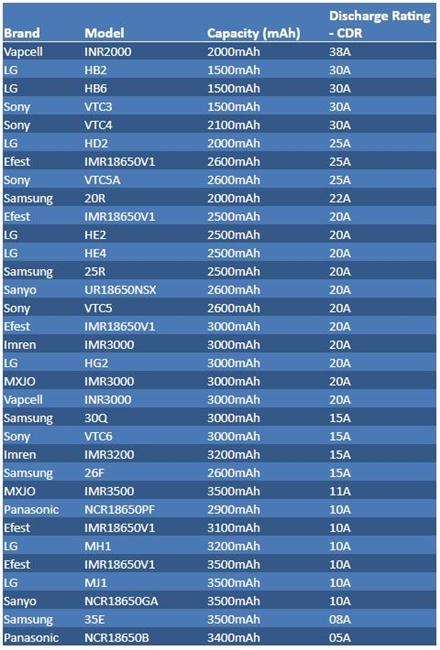
Voltage Discharge Curve
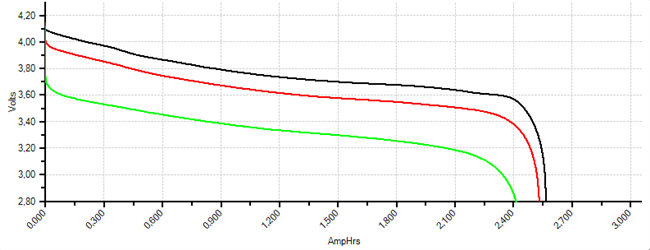
Operating Temperature – If your battery is consistently reaching a high temperature and getting hot, this is a warning sign that the battery is being pushed too hard. A battery that is consistently rising above 45C will certainly age faster than a cool running battery. They can also be dangerous as the potential for venting and/or bursting is increased greatly with a high temperature lithium ion battery. You should consider choosing a battery with a higher CDR rating.
Flat top and Button Top – One final thing you want to consider is whether you need a flat top battery or a button top battery. This is referring to the positive end of the battery. A button top battery has a protruding surface which increases the battery’s length and may not fit in a device which requires a flat top battery. A flat top is as the name suggests a flat surface and may appear to be too short if your device is requiring a button top battery.

18650 Battery Chemistry
Battery chemistry is not an attribute most consumers need to be aware of when choosing an 18650 battery. A battery should be chosen based upon the factors listed above; Brand, Capacity, Discharge Rating, Voltage and Temperature. With that being said, some chemistry mixtures are more volatile than others and we have listed these in terms of least volatile to most volatile.
Common Battery Chemistry
LFP (lithium-iron-phosphate) – Least Volatile
LMO (lithium-manganese-oxide)
NMC (nickel-manganese-cobalt)
NCA (nickel-cobalt-aluminum)
LCO (lithium-cobalt-oxide) LiPo – Most Volatile
Common prefixes that are used by manufacturers
IMR (lithium-manganese-rechargeable) - Efest 18650 Batteries
INR (lithium-nickel-rechargeable) - Samsung 25R - Sony VTC5 - LG HG2
NCR (nickel-cobalt-rechargeable) - Panasonic 18650 PF - Panasonic NCR18650B
ICR (lithium-cobalt-rechargeable) - Samsung 26J
Caring for your 18650 Battery
There are many safety precautions that should always be taken when using, handling and/or storing lithium ion batteries. Please refer to our battery safety guide for these tips. The following tips are suggested to get the most life out of your 18650 lithium ion batteries.
Temperature – Lithium ion batteries will age at an accelerated rate below 0C or above 45C. If you are running your batteries hot, this will certainly cause premature aging.
Discharging and Charging – To get the max life from your battery, we recommend keeping it within a range of 3.0V – 4.0V. This tip does take some effort as most batteries will discharge down to 2.5V before requiring a recharge and will fully charge up to 4.2V. The logic behind this is when you push the cell to the extremes of its capabilities; it puts stress on the battery. In testing, batteries kept in this range will have double the life expectancy.
Charger – To get the most out of your batteries, you should always make sure your charging device automatically turns off when charging is complete. It is also recommended to remove the batteries from the charger once charging is completed as many chargers have a function to continually top off the battery to make sure it is always at max capacity. This constant topping off can stress a battery and cause it to age prematurely.
Charge Rate – There are chargers on the market capable of charging at 4A or even 6A. While this can be very convenient, keep in mind rapid charging can accelerate the aging process as these speeds put added stress on the battery cell. A healthy range to charge your batteries at is anywhere between 0.1A and 3A.
* Lithium ion 18650 batteries are manufactured and sold for the intended use of system integrations with proper protection circuitry or battery packs with a BMS (battery management system) or PCB (circuit board/module). These batteries are neither designed nor intended to be used with an e-cigarette, vaporizer or similar device. *
